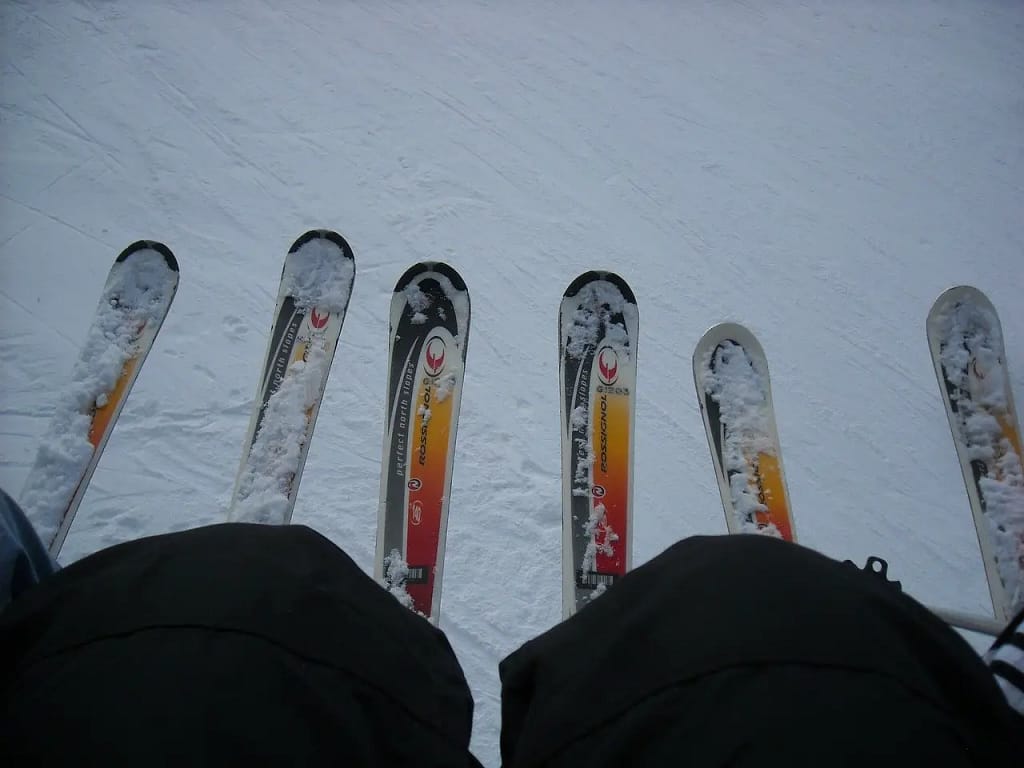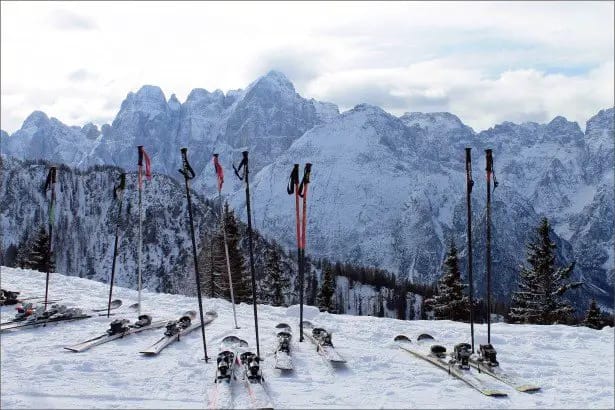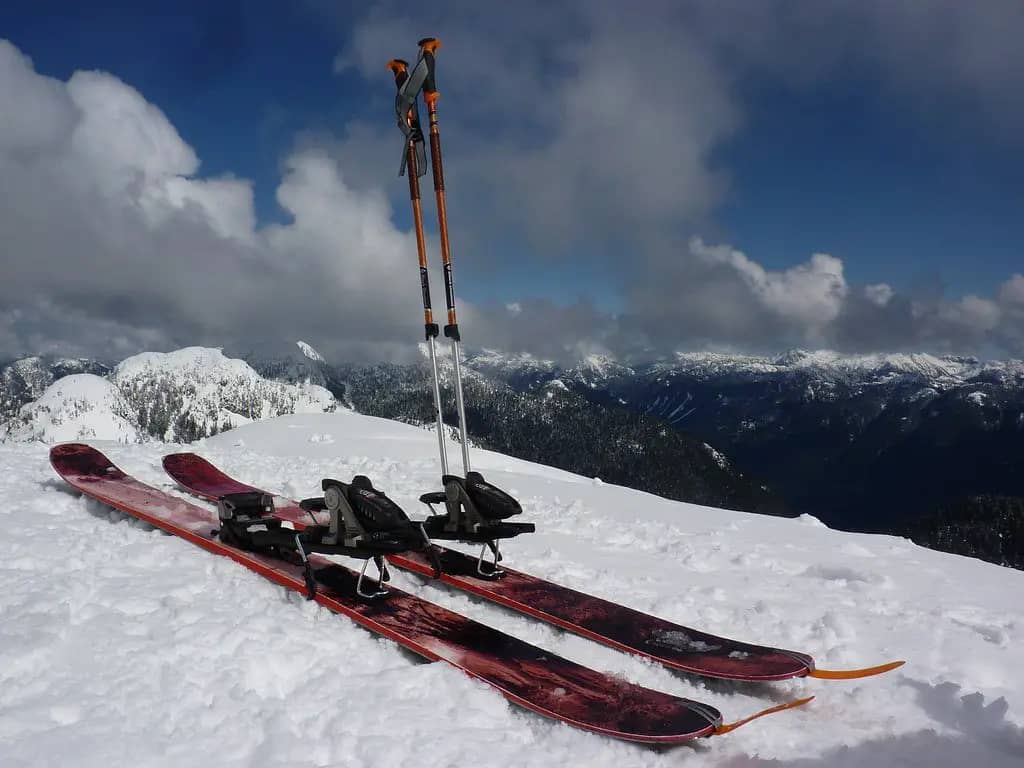Table of Contents
Lifespan of Ski Gear: Skis and Ski Boots
Embarking on a snowy adventure calls for top-notch equipment. But have you ever paused mid-descent to wonder, “How long do skis last?” or “Are my ski boots past their prime?” You’re not alone! The lifespan of your ski gear is a crucial aspect that can impact not just your performance, but also your safety on the slopes.
Understanding the Importance of Ski Gear’s Lifespan
Why fuss over the lifespan of skis and ski boots? Simple: durability equals reliability. Whether you’re carving down groomers or navigating backcountry powder, the integrity of your gear is paramount. It’s the difference between a stellar run and a potential yard sale on the mountain. Plus, knowing when to upgrade can save you from those dreaded equipment malfunctions that no one wants to experience at 20 mph.
Factors Influencing the Lifespan of Skis and Ski Boots
Several factors can affect how long your trusted skis and boots will last. From the frequency of your alpine escapades to the meticulous care you lavish on your gear post-adventure, every aspect plays a part. But don’t fret, intrepid skier! We’ll delve into these factors and more, ensuring your ski gear endures many more joyful jaunts down the wintry white.
With a keen eye on these details, you’ll not only optimize your gear’s lifespan but also enhance your overall skiing experience. So, let’s glide into the nitty-gritty of ski gear longevity and ensure your equipment is as ready for adventure as you are!

How Long Do Skis Last?
Ever wondered, how long do skis last? It’s a question that’s as common as fresh powder on a mountain peak for avid skiers. The lifespan of your skis isn’t just a number; it’s a journey that varies based on several factors. But don’t worry, we’re here to guide you down this slippery slope with ease.
The Average Lifespan of Skis
Typically, a well-maintained pair of skis can last between 100 to 125 days on the slopes. However, that’s not set in stone. For the weekend warrior, that might mean several seasons of use, while for the daily shredder, it could be just a single season. It’s not just about the days, though; it’s the quality of those ski days that count. Let’s carve deeper into this topic, shall we?
Factors that Affect How Long Skis Last
Several factors can either send your skis into an early retirement or help them stick around for the long haul. Material, construction, and usage play pivotal roles. High-performance skis, for example, might be made with advanced materials that respond beautifully to precision turns but could wear out faster than their all-mountain counterparts. Additionally, if you’re hitting aggressive terrains or catching big air, your skis are absorbing more impact, which can shorten their lifespan.
Let’s not forget about maintenance. Regular tuning and proper storage are like the fountain of youth for skis. Keep them dry, keep them tuned, and they’ll keep you gliding.

Signs That Your Skis Need to be Replaced
Now, let’s talk signs. It’s not just about counting days or seasons. Your skis will speak to you, and here’s how to listen. If the base is deeply scratched, the edges are thinning, or the ski has lost its camber (that lively, springy quality), it’s time to consider new gear. Think of it as your skis waving a white flag after a valiant battle with the slopes.
Another telltale sign is performance. Are your skis not holding an edge like they used to? Does it feel like you’re working harder to achieve the same turns? These are whispers of goodbye from your trusted companions. Heed their words, and you’ll not only maintain performance but also ensure your safety.
How Long Do Ski Boots Last?
When it comes to ski boots, the question of longevity is not just about getting the most bang for your buck; it’s about comfort and safety on the slopes. So, how long do ski boots last? Let’s dive in and find out.
The Average Lifespan of Ski Boots
The average lifespan of ski boots typically ranges between 50 to 200 full skiing days. This variance depends on the boot’s construction, material quality, and the intensity of use. A casual skier might find their boots lasting on the higher end of this spectrum, while a professional’s boots may retire sooner due to the rigorous demands placed on them.

Factors that Affect How Long Ski Boots Last
Several factors contribute to the longevity of your ski boots. The material of the boot shell, the liner’s quality, and how well the boots are maintained all play crucial roles. For example, boots made with higher-grade plastics and featuring replaceable parts can often outlast their counterparts. Moreover, how you store your ski boots during the off-season can significantly affect their lifespan—dry, cool conditions are best to prevent material degradation.
Signs That Your Ski Boots Need to be Replaced
Knowing the signs that your ski boots need to be replaced is key to avoiding discomfort and injury. If you notice that your boots have become too comfortable—meaning they’re likely overly packed out and no longer providing the necessary support—it’s time to consider a new pair. Other indicators include visible damage to the shell, worn soles, or persistent discomfort despite adjustments. Always remember, the safety and enjoyment of your skiing experience hinge on the condition of your gear.
Let’s look at a table representation of data to illustrate the key factors affecting ski boot lifespan:
| Factor | Impact on Lifespan |
|---|---|
| Material Quality | Higher quality materials can extend the boot’s life. |
| Usage Intensity | More frequent, intense use can shorten the boot’s life. |
| Maintenance | Regular care can preserve the boot’s condition. |
| Storage Conditions | Proper storage can prevent premature aging. |
In conclusion, while the lifespan of ski boots varies, understanding and managing the factors that affect their durability can help ensure they last as long as possible. Stay tuned for more tips on ski gear maintenance to keep your boots in top shape for seasons to come.
Proper Maintenance to Extend the Lifespan of Skis and Ski Boots
Ever wondered why some ski gear seems to defy the ravages of time? The secret, my fellow snow enthusiasts, lies in proper maintenance. Just as a well-tuned engine runs smoother, well-maintained skis and ski boots will not only last longer but also enhance your performance on the slopes. Let’s dive into the nitty-gritty of keeping your gear in top-notch condition.
How to Take Care of Your Skis
First things first, let’s talk about your skis. These trusty companions are your wings on the snow, and they deserve your utmost care. After each exhilarating run, take a moment to wipe off any excess snow and moisture. This simple act can prevent rust and decay, which can be detrimental to your skis’ structural integrity.
But don’t stop there! Regularly giving your skis a professional tune-up is like giving them a spa day. A tune-up typically includes edge sharpening, base grinding, and waxing, which together can significantly improve your skis’ lifespan. Here’s a little statistic to ponder: well-maintained skis can last an average of 20 to 30 more days on the slopes than neglected ones. That’s almost a month of extra joy!
For the visual learners among us, consider this table:
| Maintenance Task | Frequency | Impact on Lifespan |
|---|---|---|
| Wipe Down | After Each Use | Prevents Rust |
| Waxing | Every 4-6 Days of Skiing | Protects Base |
| Edge Sharpening | As Needed | Ensures Performance |
| Base Grinding | Once a Season | Maintains Smoothness |
How to Take Care of Your Ski Boots
Moving on to ski boots, these are arguably the most crucial part of your gear. A well-fitted boot can be the difference between a good day and a great day. After each use, dry the liners thoroughly—this not only provides comfort but also prevents the build-up of unpleasant odors and bacteria. Buckle up your boots loosely when storing them to maintain their shape and integrity.
Don’t forget the soles! Check them regularly for wear and tear, as worn soles can affect your safety by impairing the boot’s ability to properly bind to the ski. Replacing soles is a small investment compared to the cost of new boots or, worse, an injury.
Here’s a pro tip: invest in a good boot dryer. It’s a game-changer. Not only will it keep your boots dry and cozy, but it will also extend their lifespan significantly. Remember, happy feet mean a happy skier!
The Impact of Ski Gear Lifespan on Performance and Safety
When it comes to hitting the slopes, performance and safety are two sides of the same coin. The lifespan of your ski gear plays a crucial role in ensuring both. But how exactly does it do that? Let’s dive in and explore the intricate dance between well-maintained gear, top-notch performance, and the safety of skiers.
The Role of Well-Maintained Ski Gear in Optimal Performance
Imagine gliding down a frosty mountain with the grace of an eagle in flight. That’s the feeling of optimal performance we all crave, right? Well-maintained skis and ski boots are your wings in this scenario. They ensure smooth turns, precise control, and efficient power transfer from your body to the snow. A study published in the Journal of Winter Sports Technology suggests that skiers with gear in prime condition experience up to a 20% improvement in their skiing efficiency.
Now, let’s break this down with a table to illustrate the point:
| Gear Condition | Control Level | Efficiency |
|---|---|---|
| New or Well-Maintained | High | Up to 20% Increase |
| Worn or Poorly Maintained | Low | Decrease in Performance |
The Importance of Ski Gear Lifespan for Safety
Now, let’s switch gears and talk about safety. It’s no secret that the mountains can be unforgiving. Worn-out ski gear can lead to unpredictable equipment behavior, increasing the risk of falls and injuries. In fact, according to the International Society of Skiing Safety, equipment failure accounts for approximately 10% of on-slope accidents. That’s a statistic we cannot ignore!
So, when we talk about the lifespan of ski gear, we’re not just discussing how long your boots can avoid looking like they’ve been chewed up by a yeti. We’re talking about the integrity of the bindings, the responsiveness of the skis, and the support of the boots that cradle your feet through every mogul and jump. It’s about making sure that every piece of gear is in tip-top shape to protect you when you’re carving up the mountain at full speed.
By ensuring your ski gear is within its optimal lifespan, you’re not just setting yourself up for a stellar run; you’re also strapping on a safety net that lets you push your limits with confidence.

Conclusion: Maximizing Your Ski Gear Lifespan
As we carve our final turn through this informative trail, let’s summarize the key takeaways to maximize your ski gear’s lifespan. Whether you’re a seasoned pro or a fresh-faced novice, understanding the endurance of your skis and ski boots is crucial for an exceptional experience on the slopes.
Firstly, remember that quality maintenance is your gear’s best friend. Regularly tuning your skis and keeping your ski boots dry will ward off the wear and tear that threatens their longevity. Moreover, be vigilant for signs of aging, such as diminished performance or visible damage, which signal that it’s time for an upgrade.
Secondly, consider the impact of your skiing style. Aggressive skiers may find that their gear endures more stress, necessitating more frequent replacements. Conversely, those who enjoy leisurely runs may enjoy a longer relationship with their equipment.
Lastly, staying informed about the latest advancements in ski technology can help you make educated decisions when it’s time to purchase new gear. Keep an eye out for innovations that promise enhanced durability without compromising on performance.
Frequently Asked Questions
How can I tell if my skis are worn out?
The most telling signs include a loss of camber (the natural arc of the ski), diminished edge sharpness that’s difficult to restore with tuning, and core shots or cracks in the base or top sheet. If you feel like you’re not getting the grip on icy patches or your skis aren’t as responsive, it might be time to consider a new pair. Remember, well-maintained skis can last longer, so regular tune-ups are key!
Can old ski boots be harmful to my feet?
Definitely. Ski boots that have lost their structural integrity can lead to discomfort and even injury. Over time, the plastic shell can break down, and the liners can compress, resulting in a less precise fit. This can affect your control over the skis and increase the risk of blisters or worse. If your boots don’t snugly cradle your feet anymore or you’re experiencing unusual pain after a day on the slopes, it’s worth getting fitted for a new pair.
How often should I replace my ski gear?
The frequency of replacement really depends on how often you ski and how well you take care of your gear. Skis can last anywhere from 100 to 200 full days of skiing, while boots might need replacing every 50 to 200 days, depending on the quality and fit. If you’re a casual skier hitting the slopes a few times a year, your gear could last much longer than that of a daily, aggressive skier. Just keep an eye on the wear and performance of your equipment.
How can I extend the lifespan of my skis and ski boots?
Proper maintenance is the key to longevity. For skis, regular waxing and edge tuning are a must. Store them in a cool, dry place during the off-season and avoid leaving them in direct sunlight for extended periods. As for boots, dry them out completely after each use, buckle them up for storage to maintain their shape, and keep them away from heat sources that can warp the plastic. A little TLC goes a long way!
Does the type of skiing I do affect how long my skis and ski boots last?
Yes, it certainly does. Aggressive skiing, like racing or frequent off-piste adventures, can wear down equipment faster than leisurely groomed runs. The rougher the terrain and the harder you push your gear, the more stress you’re putting on it. It’s important to choose the right gear for your preferred style and to be mindful of the extra wear and tear if you’re skiing hard and often.





No responses yet